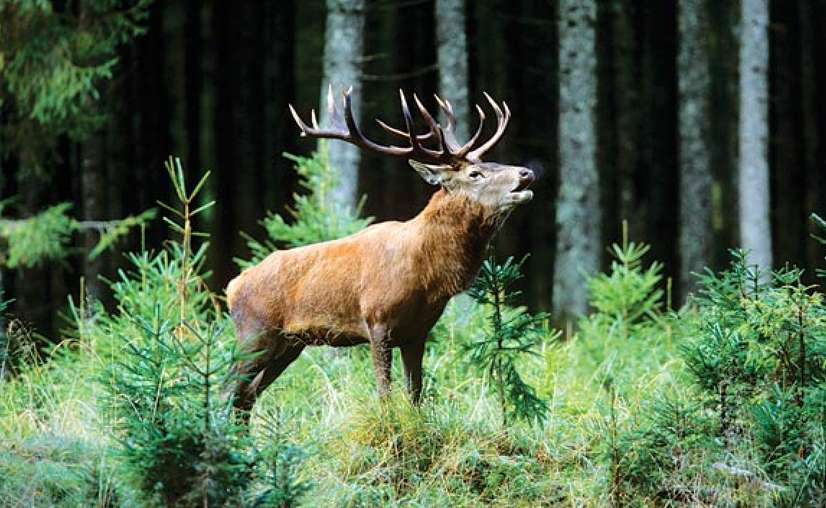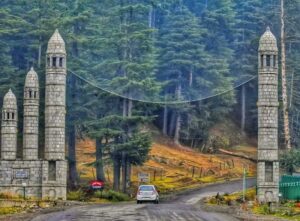Growing up in the shadow of Kashmir’s magnificent mountains, Dachigam National Park has always been our crown jewel. Located just 22 km from the bustling heart of Srinagar, this pristine Himalayan sanctuary isn’t just any forested reserve — it’s the last stronghold of the critically endangered Hangul, or Kashmir Stag, a species we Kashmiris consider a sacred symbol of our natural heritage.
As someone who has explored these valleys since childhood, I’ve witnessed the changing seasons transform Dachigam National Park from spring’s vibrant bloom to winter’s serene snowscape. With diverse altitudes ranging from 1,650 to 4,200 meters, Dachigam cradles a unique ecosystem of alpine pastures, dense coniferous forests, and glistening mountain streams that we locals have cherished for generations.
In this comprehensive Dachigam National Park travel guide, I’ll share not just tourist information but the intimate knowledge only a native can offer: how to secure permits, when our beloved Hangul might grace you with its presence, the park’s lesser-known residents, and practical safari tips for 2025 that we locals swear by.
The Living Treasure of Dachigam National Park: The Hangul

Description
The Hangul is our magnificent subspecies of the Red Deer, distinguished by its rich chocolate-brown coat and impressive 12 to 16-point antlers. Mature males can weigh over 200 kg and are especially striking during the autumn rut when they roam Dachigam’s lower valleys. We Kashmiris consider spotting a Hangul a blessing and sign of good fortune.
Conservation Status
Listed as Critically Endangered on the IUCN Red List, the Hangul is down to a fragile population of around 200 individuals (as per the latest estimates). Its survival faces persistent threats — habitat fragmentation, livestock overgrazing, and sadly, some instances of poaching despite our community’s efforts to protect them. As a flagship species for Kashmir’s ecosystem, protecting the Hangul means conserving the entire high-altitude Himalayan forest network.
Spotting Chances
Let me be candid as only a local can be: Hangul sightings are rare. These shy deer are masters of camouflage, and even experienced trackers like myself often return without a glimpse.
Best chances?
- Lower Dachigam during late autumn (Sep-Nov) when the stags descend for the rut, or in winter (Dec-Feb) when snow drives them closer to the park’s valleys.
- Be prepared for long, silent waits. Binoculars, patience, and luck are your best allies.
My grandfather always said: “Even if the Hangul hides from you, the whispers of Dachigam will fill your soul.” The serenity and untouched beauty of the park is a treasure in itself.
The Rich Biodiversity of Dachigam National Park
Mammals
While Hangul is our poster child, Dachigam National Park hosts several other intriguing mammals that we locals have learned to track and respect:
- Himalayan Black Bear (active mostly in summer-autumn, in upper regions)
- Leopard (exceedingly elusive, known locally as “Suh”)
- Musk Deer (our forest’s shy perfumers)
- Yellow-throated Marten (skilled hunters we call “Rama Kout”)
- Himalayan Weasel
- Common Langur (our treetop acrobats)
Local Activity: Many Kashmiri elders in villages bordering Dachigam National Park practice traditional animal tracking. Visitors can join guided “tracking workshops” where our village elders teach you to identify pug marks, scat, and other signs of wildlife. These workshops typically run twice monthly and can be arranged through the park office with advance booking.
Birds
Dachigam National Park is a paradise for birdwatchers, its varied altitudes nurturing over 150 recorded species. Highlights include:
- Himalayan Monal (State Bird of J&K, which we locally call “Sonmarg”)
- Koklass Pheasant
- Bearded Vulture (Lammergeier)
- Himalayan Griffon
- Kashmir Flycatcher (a rare endemic summer visitor)
- Himalayan Rubythroat
- Woodpeckers, Warblers, Tits, and Finches
Local Activity: Every spring, local bird enthusiasts gather for the “Dawn Chorus Walk” in the lower reaches of Dachigam National Park. Tourists can join these pre-arranged walks where we share traditional Kashmiri knowledge about bird calls and their significance in our folklore. The walks include a traditional Kashmiri breakfast of Kahwa (saffron tea) and Girda (Kashmiri bread) at the end.
Flora
From lush riverine forests and temperate oak-chestnut belts to pine and fir stands, the park’s vegetation changes dramatically with altitude. Notable species:
- Himalayan Birch (we use its bark traditionally for manuscript writing)
- Blue Pine (our beloved “Kail”)
- Deodar Cedar (sacred in our culture)
- Wild Cherry (produces delicious berries we collect seasonally)
- Alpine grasses and shrubs in upper park
Local Activity: During summer months, local herbalists conduct “Medicinal Plant Walks” in the buffer zones of the park. Visitors learn how we Kashmiris have used these plants for centuries to treat ailments. The walk concludes with a demonstration of making traditional herbal tea using ethically collected plants from outside the protected area.
Accessing Dachigam National Park: Permits & Procedures [2025]
Permit is Mandatory
You cannot enter Dachigam National Park without a valid permit obtained in advance. As locals, we strictly adhere to this rule to protect our precious ecosystem. Spontaneous visits are not allowed.
Application Process (As of April 11, 2025)
- Authority: Chief Wildlife Warden’s Office, J&K Wildlife Protection Department, Srinagar
- Documents: Application form + valid Photo ID (Passport for foreigners, Aadhaar/Voter ID for Indian nationals)
- Fees: ₹500 for Indian nationals, ₹1000 for foreign visitors (camera fees additional)
- Processing Time: Typically 1-2 working days, but I recommend applying at least 3 days in advance during peak season.
Important Tip from a Local: Many visitors miss out because they don’t know that applications submitted before 11 AM are processed the same day during off-season. Always check directly on the J&K Wildlife Protection Department official site or call their Srinagar office before your planned visit.
Entry Gates & Timings
- Main Entry Gate: Harwan, near Srinagar
- Timings: Generally 9 AM to 5 PM (April-October) and 10 AM to 4 PM (November-March)
Local Insight: The best time to arrive is early morning, around 8:30 AM, to join the queue when the gates open. We locals know the first visitors of the day have the highest chance of wildlife sightings as animals retreat deeper into the forest when human activity increases.
Exploring Dachigam National Park: Zones & Authentic Experiences
Lower Dachigam National Park
Accessible to visitors with permits, this area includes guided walks or controlled vehicle drives along a set route. Highlights:
- Dagwan River (famous for its crystal-clear water where we locals perform traditional fishing demonstrations)
- Trout Fish Farm (where you can learn about our sustainable fishing practices)
- Wildlife enclosures (used for rehabilitation)
- Forested trails with potential Hangul sightings
Local Activity: On weekends, our community organizes traditional Kashmiri picnics called “Wazwan in the Wild” at designated spots in Lower Dachigam National Park. Visitors can pre-book to join us for a taste of authentic Kashmiri cuisine prepared on site, while learning about our cultural connection to the forest. All proceeds support local conservation efforts.
Upper Dachigam National Park
Strictly restricted. Access is typically reserved for researchers or forest staff. As a Kashmiri guide, I can share that occasionally special permissions may be granted for specific trekking or conservation projects, but this is extremely rare for tourists.
Safari Reality Check: This is not an open-jeep safari à la Corbett or Ranthambore. We Kashmiris approach the park with reverence as it’s a conservation-sensitive visit, focused on appreciating nature’s silence and beauty — and if luck smiles, a Hangul in the mist.
Local Activity: Though direct access is limited, our community runs a “Conservation Workshop” at the periphery of Upper Dachigam National Park, where visitors can participate in habitat restoration projects like native plant nurseries. This gives you a taste of the ecosystem while contributing to its preservation.
Seasonal Guide to Dachigam National Park
- Spring (Mar-May): Witness the rebirth of Dachigam National Park as wildflowers carpet the meadows and birds return to nest. We locals celebrate this season with the “Tulip Festival” in nearby Srinagar, which you can combine with your park visit.
- Summer (Jun-Aug): The ideal time for exploring higher elevations and spotting diverse bird species. Our community offers special “Summer Trekking Programs” along the periphery of the park.
- Autumn (Sep-Nov): The most magical season at Dachigam National Park with golden chinar leaves and the highest chance of Hangul sightings during rutting season. Join us for the traditional “Autumn Harvest Festival” in neighboring villages.
- Winter (Dec-Feb): Snow transforms Dachigam National Park into a wonderland. While parts may be inaccessible, the lower regions offer unique opportunities to spot wildlife against the snow. Try traditional Kashmiri snowshoeing with local guides.
Local Insight: We Kashmiris consider September-October the absolute best time to visit, as the weather is pleasant, the landscape is vibrant with autumn colors, and wildlife activity peaks before winter.
Practical Tips for Responsible Visitors to Dachigam National Park
- Hire a Local Guide: As Kashmiris who have grown up around the park, we offer insights no outsider can. Look for certified local guides through the Wildlife Department.
- Essentials: Binoculars, DSLR/zoom camera, drinking water, light snacks, warm clothing in winter. I recommend carrying a small notebook to document sightings as we traditionally do.
- Clothing: Wear what we locals do – camouflage or earth-tones to blend with the surroundings. In winter, bring traditional Kashmiri Pheran (woolen cloak) – many homestays loan these to guests.
- Code of Conduct: Follow our traditional forest etiquette – no littering, no loud conversations, no smoking, don’t feed animals, walk softly on trails.
- Facilities: Minimal. No shops or restaurants inside. Carry essentials. Many local families offer packed traditional Kashmiri lunches for park visitors – arrange this through your guesthouse.
Local Activity: Join our community’s monthly “Clean Dachigam” initiative, where locals and tourists work together to remove any waste from the buffer zones of the park. It’s a wonderful way to give back and connect with local conservation advocates.
The Sacred Wilderness of Dachigam National Park

For us Kashmiris, Dachigam National Park isn’t merely a tourist attraction – it’s our heritage, our identity, and our responsibility. When you visit with respect and mindfulness, you become part of our centuries-old tradition of guardianship over this sacred land.
The name “Dachigam” itself means “ten villages” in Kashmiri, referring to the ten villages that were relocated to create this sanctuary. Their sacrifice ensures that the Hangul and countless other species continue to thrive in this pristine ecosystem.
As you leave the park, carry with you not just photographs but the spirit of conservation that we locals have nurtured for generations. And remember our old Kashmiri saying: “The one who protects the forest, protects their own soul.”
The Hangul awaits — if you’re blessed enough to witness our living legacy.



